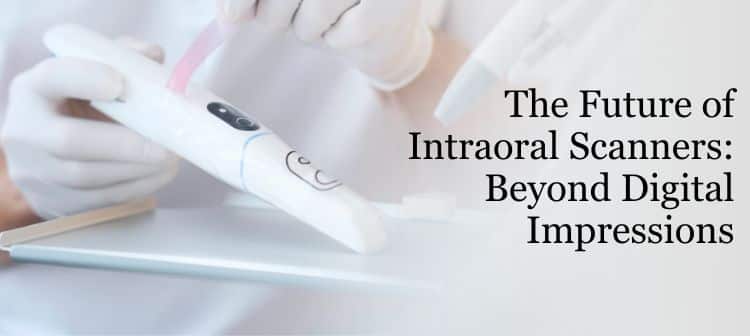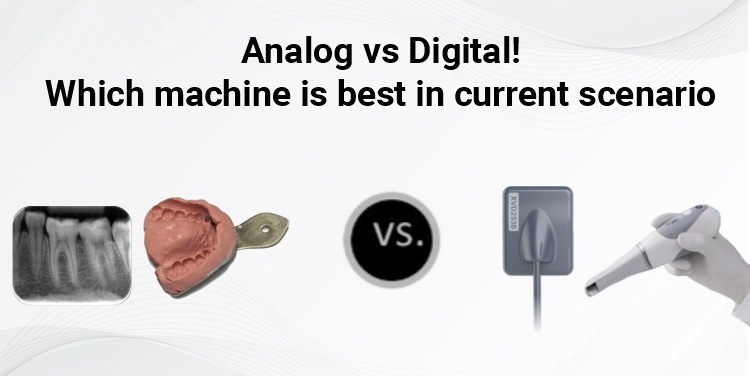Enhancing Diagnostic Accuracy with Advanced Imaging
Advancing Dentistry Through Cutting-Edge Imaging Techniques
In the realm of modern dentistry, the pursuit of precision and accuracy in diagnosis has always been paramount. Today, this pursuit is being revolutionized by the advent of advanced imaging techniques. These state-of-the-art technologies have emerged not only as tools for visualization but as pivotal elements in enhancing diagnostic accuracy. As we delve into the world of dental care, the critical role of advanced imaging in diagnosing, planning, and executing dental treatments becomes increasingly evident.
Advanced imaging techniques, encompassing a wide array of innovative technologies like Cone Beam Computed Tomography (CBCT), digital X-rays, and 3D scanning, have redefined what is possible in dental diagnostics. These methods go beyond the capabilities of traditional imaging, offering clearer, more detailed views of dental anatomy. This leap in imaging quality allows dental professionals to detect conditions with greater precision, plan treatments more effectively, and execute procedures with increased confidence.
As we set the stage to explore the profound impact of these technological advancements, it’s clear that the landscape of dental imaging is undergoing a significant transformation. This evolution is not just a step forward in technology; it’s a stride towards more accurate, efficient, and patient-centric dental care. The integration of these advanced imaging tools into daily dental practice represents a commitment to excellence and a dedication to providing the best possible outcomes for patients.
In this blog, we will journey through the evolution of dental imaging technology, examining how the transition from traditional to advanced methods has impacted the field of dentistry. We will explore the features and benefits of cutting-edge imaging tools, their applications in various dental specialties, and the future trends that promise to further elevate the standards of dental diagnostics and treatment.
 The Evolution of Dental Imaging Technology
The Evolution of Dental Imaging Technology
From Conventional Techniques to High-Precision Diagnostics
The journey of dental imaging technology is a compelling narrative of continuous evolution and innovation. For many years, traditional dental X-rays were the mainstay in dental diagnostics, offering two-dimensional images that served as the primary visual aid for dentists. While these methods provided valuable insights, they were limited in scope and detail, often leaving room for interpretation and uncertainty.
The leap from these conventional techniques to modern high-precision diagnostics represents a significant milestone in the field of dentistry. The advent of digital radiology marked the beginning of this transformative era. Digital X-ray systems offered clearer images with less radiation exposure compared to their analog predecessors. However, the real revolution in dental imaging began with the introduction of more advanced imaging tools, particularly intraoral sensors and Cone Beam Computed Tomography (CBCT).
Advancements in Radiology and Imaging Tools
Intraoral sensors have played a pivotal role in modernizing dental diagnostics. These compact, highly sensitive devices capture detailed images of individual teeth or sections of the mouth, providing much higher resolution images than traditional X-ray films. The immediacy of digital imaging with intraoral sensors allows for quicker assessments, enhancing both the efficiency of the diagnostic process and the patient experience.
The development of CBCT technology further propelled dental imaging into a new realm. Unlike traditional X-rays, CBCT provides three-dimensional images, offering a comprehensive view of the dental and maxillofacial structures. This technology has been instrumental in complex diagnoses and treatment planning, particularly in implantology, orthodontics, and oral surgery, where precision is crucial.
The integration of these advanced imaging technologies has revolutionized dental diagnostics, allowing for more accurate, detailed, and efficient assessments. Intraoral sensors and CBCT have not only enhanced the clarity of images but also reduced the time and radiation exposure involved in capturing these images.
 Cutting-Edge Imaging Tools in Dentistry
Cutting-Edge Imaging Tools in Dentistry
Innovations Elevating Diagnostic Precision
The landscape of dental diagnostics has been significantly enhanced by the introduction of cutting-edge imaging tools, which have brought about a new level of precision and efficiency in dental care. Among these advancements, the latest imaging tools like the Xpect Vision Intraoral Sensor stand out for their revolutionary features and contributions to improving diagnostic accuracy.
Features and Benefits of Modern Imaging Tools
The Xpect Vision Intraoral Sensor exemplifies the pinnacle of innovation in dental imaging. This state-of-the-art sensor incorporates photon counting technology, a breakthrough in dental radiography. Photon counting technology works by detecting and counting individual photons of X-ray light, which significantly enhances image clarity and detail. This method offers a number of benefits over traditional imaging techniques:
- Enhanced Image Quality: The photon counting technology in the Xpect Vision Intraoral Sensor provides exceptionally clear and detailed images. This high resolution allows dentists to observe fine anatomical structures and subtle pathological changes that might be missed with conventional sensors.
- Lower Radiation Doses: One of the most significant advantages of photon counting technology is its ability to produce high-quality images at significantly lower radiation doses. This feature is crucial for patient safety, especially for those requiring frequent radiographic assessments.
- Improved Diagnostic Accuracy: With clearer and more detailed images, dentists can make more accurate diagnoses. This is particularly beneficial in identifying early stages of dental diseases, such as small caries or initial bone loss, leading to early intervention and better treatment outcomes.
State-of-the-Art Equipment Transforming Dental Diagnostics
The introduction of equipment like the Xpect Vision Intraoral Sensor into dental practices marks a transformative phase in dental diagnostics. These advanced tools not only offer superior imaging capabilities but also enhance the overall efficiency of the diagnostic process. The integration of such technology facilitates a more streamlined workflow, enabling dental professionals to focus on patient care with greater confidence in their diagnostic decisions.
 The Impact of Advanced Imaging on Clinical Practice
The Impact of Advanced Imaging on Clinical Practice
Elevating Diagnostic Standards in Dentistry
The integration of advanced imaging techniques into clinical practice has significantly enhanced the accuracy and reliability of dental diagnostics. This technological leap has been instrumental in refining the approach to dental care, offering a level of detail and precision that was previously unattainable.
Enhanced Accuracy in Clinical Imaging
Advanced imaging tools, such as high-resolution intraoral sensors and CBCT scanners, have redefined the standards of clinical imaging. These tools provide exceptionally detailed views of dental structures, allowing for more accurate diagnoses. For instance, the ability to clearly visualize the intricacies of tooth anatomy and bone density aids in detecting issues like early-stage decay, micro-fractures, or hidden dental abscesses that traditional X-rays might miss. This level of detail is crucial in developing effective treatment plans and preventing the progression of dental issues.
The precision of these imaging techniques also plays a vital role in specialized dental procedures. In implantology, for example, precise imaging ensures the correct placement of implants, while in orthodontics, it aids in the accurate alignment of teeth.
Implications for Dental Professionals and Patients
For dental professionals, the adoption of advanced imaging technologies means a shift towards more informed and confident decision-making. It allows dentists to diagnose with greater certainty, reducing the likelihood of misdiagnosis and unnecessary treatments. This not only enhances the quality of care provided but also contributes to the professional development of dental practitioners, keeping them at the forefront of technological advancements in their field.
From the patient’s perspective, the improvements in imaging technology translate to a range of benefits. Enhanced diagnostic accuracy leads to more targeted and effective treatments, improving overall patient outcomes. Additionally, patients experience a more streamlined and less invasive diagnostic process, often with reduced radiation exposure. This contributes to a better overall patient experience, fostering trust and satisfaction in the dental care received.
 Innovations in Dental Diagnosis
Innovations in Dental Diagnosis
Recent Innovations Shaping Dental Diagnostics
The field of dental diagnosis is currently experiencing a wave of innovation, propelled by advancements in technology and a growing emphasis on precision and efficiency. These innovations are not just enhancing existing diagnostic methods but are also introducing new paradigms in dental care.
One of the most significant recent developments is the integration of artificial intelligence (AI) and machine learning in diagnostic tools. AI algorithms can analyze dental images with remarkable accuracy, identifying patterns and anomalies that might be challenging for the human eye. This includes the detection of early signs of decay, gum disease, and even oral cancer, leading to earlier and more effective interventions.
Another innovation is the advent of handheld imaging devices, which allow for more flexible and patient-friendly diagnostic procedures. These portable tools enable intraoral scanning and imaging directly at the patient’s chair, streamlining the diagnostic process and enhancing patient comfort.
Future Trends and Their Impact
Looking ahead, the future of dental diagnostic technology appears to be driven by digital and non-invasive methods. Optical imaging technologies, for example, are emerging as promising tools for early caries detection and monitoring of gum health. These methods use light and special cameras to capture images of teeth and gums, providing a safe and comfortable alternative to traditional X-rays.
The potential impact of these innovations on the field of dentistry is substantial. With more accurate and early diagnosis, dental professionals can tailor treatments more effectively, potentially preventing more severe dental problems. This shift towards early detection and prevention aligns with the broader trend in healthcare towards proactive and patient-centered care.
Furthermore, as diagnostic technologies become more advanced and accessible, we can expect a more personalized approach to dental care. Dentists will be able to offer treatments that are not only more effective but also tailored to the individual needs and conditions of each patient.
 Embracing a New Era in Dental Diagnostics
Embracing a New Era in Dental Diagnostics
As we conclude our exploration of the significant strides made in dental imaging technologies, it’s clear that the field of dentistry is on the cusp of a new era marked by precision and innovation. Advanced imaging techniques have not only enhanced diagnostic accuracy but have fundamentally altered the landscape of dental care. These advancements represent more than technological progress; they signify a shift towards more informed, efficient, and patient-centric dental practices.
The Vital Role of Advanced Imaging
The importance of advanced imaging in dentistry cannot be overstated. By providing clearer, more detailed, and more accurate views of dental structures, these technologies enable early detection of issues, precise treatment planning, and improved patient outcomes. Tools like high-resolution intraoral sensors, CBCT scanners, and AI-integrated diagnostic systems have set new benchmarks in identifying and addressing dental health concerns.
These advancements have not only benefited patients by ensuring more accurate diagnoses and effective treatments but have also empowered dental professionals. With access to better diagnostic tools, dentists can make more informed decisions, tailor treatments to individual patient needs, and enhance the overall quality of care.
Looking Ahead: The Future of Dental Imaging
The ongoing evolution of dental imaging technologies is an exciting journey, one that promises to continue bringing transformative changes to dental care. As we look to the future, we can expect further innovations that will push the boundaries of what’s possible in dental diagnostics. The integration of emerging technologies like augmented reality, 3D printing, and even more advanced AI algorithms will continue to revolutionize the way dental health is managed and treated.
In essence, the advancements in dental imaging are a testament to the dental profession’s commitment to embracing innovative solutions for the betterment of patient care. As these technologies evolve, they will undoubtedly continue to play a crucial role in advancing the field of dentistry, ensuring that dental care remains at the forefront of medical innovation and patient welfare.





Leave a comment